
△ Syrian refugees aboard a ship from Turkey arrive near Molyvos, Lesvos, Greece, on October 29, 2015. Refugees are seriously injured or killed during the dangerous journey.
In 2015, the death of a child shocked the entire world. The three-year-old child who was found dead on the Turkish beach was named Alan Kurdi. Kurdi had died from a shipwreck while trying to escape to Europe from the Syrian Civil War. This single photo of an innocent child’s death was more than enough for the world to realize the seriousness of the refugee problem.
Who is responsible for Kurdi’s death?
ㅡ
There are people who flee for their lives
ㅡ
Refugees are people who “owing to a well-founded fear of being persecuted for reasons of race, religion, nationality, membership of a particular social group or political opinions, is outside the country of his nationality and is unable or owing to such fear, is unwilling to avail himself of the protection of that country; or who, not having a nationality and being outside the country of his former habitual residence as a result of such events, is unable or, owing to such fear, is unwilling to return to it.”
Refugees are people who have to emigrate to preserve their lives and freedom. Most refugees leave their homeland empty-handed in desperate situations.
These people cannot seek protection from their home country and sometimes, their home country is the one persecuting them. If other countries do not accept them and they cannot receive help from their own country, their lives become as if they have received the death sentence.
They will have to continue their lives without any rights under conditions where it is difficult to sustain their livelihoods.
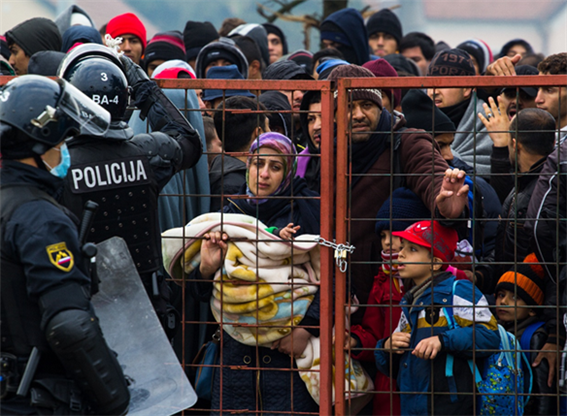
△ Syrian refugees are passing through Slovenia’s Doveba Station on October 25, 2015, to head to Germany, their dream destination.
Reasons people become refugees
l War refugees
Those who are forced to flee due to armed conflicts due to racial, ethnic, ideological, territorial, and underground resource disputes. Syrian refugees, Somali refugees, and Afghan refugees due to civil war and conflict between countries are examples of war refugees.
l Political refugees
Those who flee to escape suppression by the regime due to different political ideologies. Yemeni refugees, Kurdish refugees, and Venezuelan refugees are examples of political refugees.
l Religious refugees
Those who leave their homes to avoid conflicts, oppression, and massacres due to religious differences. Rohingya refugees who fled to escape political and religious persecution from the Myanmar government are an example of religious refugees.
l Climate refugees
Those who lose their homes due to natural disasters that cannot be controlled by humankind such as floods, droughts, volcanic eruptions, earthquakes, and tsunamis. Kiribati refugees in the South Pacific who face the threat of their homes being submerged underwater due to climate change-induced sea-level rise and Haiti refugees who lost their homes due to the level 7.0 earthquake are examples.
Climate change will become a greater cause of refugees in the future. Damage to drinking water sources, an increase of droughts and floods, reduction in food production caused by climate change are already seriously affecting Asia, Africa, and the Middle East.
ㅡ
One percent of the world’s population do not have a home
ㅡ
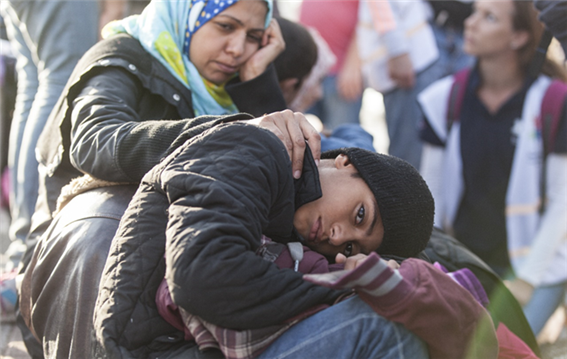
△ October 2015, Syrian refugees in a refugee camp in Kos, Greece, are in despair.
In 2019, 1% of the world's population, or 79.5 million people were living as refugees. Every two seconds, a person becomes a refugee fleeing from war and violence. Even at this moment, a person is losing hope.
The number of refugees worldwide has doubled compared to 2010. During the last ten years since 2010, 100 million people sought protection within their country or from another country after leaving their homes due to threats to their safety.
More than 80% of refugees are staying in countries or regions suffering from food shortages and malnutrition, and many of these countries are also exposed to the dangers of climate disasters. The top source countries of refugees are Syria, Yemen, Afghanistan, South Sudan, Myanmar, and Venezuela.
More than half of all refugees are children and adolescents. Some were forced to leave their hometowns along with their parents, but others became refugees themselves to escape the threats posed to them. Every year, about 10,000 children and adolescents leave in search of safety by themselves. In many cases, they also become orphaned refugees after being separated from their parents during their refugee life.
ㅡ
Life-threatening journey of refugees
ㅡ
What awaits the refugees after they leave their homes?
l Life-threatening escape and journey
The refugees' escapes and journeys are always accompanied by danger. Refugees who do not have official documents to cross the border mostly use illegal methods such as using informal passageways or getting help from brokers.
As a result, they have no choice but to go over the barbed wire fence, ride a boat with water leaks, and even hide in a container with no breathing holes in their journey to find refuge. The number of refugees who lose their lives in accidents during the escape journey continues to increase.
Currently, most of the refugees are headed for Europe. Most refugees come from Africa or the Middle East, and to them, Europe is the closest and the most suitable place to settle down. But now, Europe has begun to close its doors to refugees.
l Refugee camps
Most of the refugees leave their hometowns with empty hands. To protect them, international relief agencies provide refugee camps. Since countries in Africa and the Middle East are some of the biggest source countries of refugees, many refugee camps are in neighboring countries such as Jordan, Pakistan, Ethiopia, and Kenya.
However, these camps are poorly facilitated. Public health care or education is difficult to expect, and there are only a small amount of rationed food and tent facilities to avoid rain and wind.
According to the UNHCR, the UN Refugee Agency, more than half of the world’s refugee camps are unable to provide the minimum recommended amount of water per person, which is 20 liters. Furthermore, about 30% of the camps are not equipped with proper waste disposal and bathroom facilities.
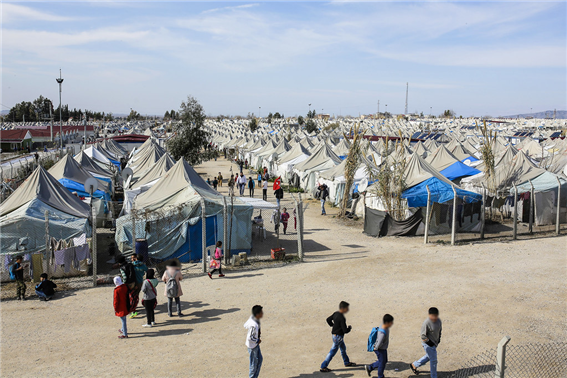
△ Refugee camp for Syrian refugees located in Turkey
l Difficult and long path to asylum
A person persecuted by one’s own country may apply to be protected by another sovereign authority, and this is called seeking “asylum”. Only when asylum applications are accepted can refugees who arrive in a new country receive official protection from the country's government and enjoy a full life. But it is generally very difficult to be granted asylum, and it may take years for asylum to be finally confirmed.
l Forced repatriation of refugees
If those who have left their homelands cannot attain refugee status, they are repatriated to their home country. The Refugee Convention stipulates that "no person shall be deported or repatriated to the borders of any area where life or freedom may be threatened on the grounds of race, religion, nationality, membership of a particular social group or political opinion."
This is the most basic principle of refugee protection in the Refugee Convention and is legally binding for all countries in the world under international customary law. However, many countries violate the agreement and forcibly repatriate refugees by prioritizing their interests and relations with neighboring countries.
ㅡ
Child refugees face an even more dangerous and uncertain future
ㅡ
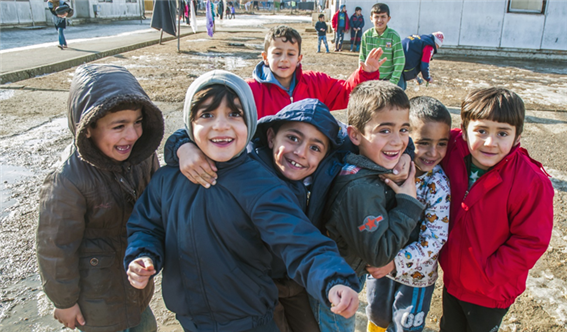
△ January 31, 2017, refugee children are playing in Belgrade, Serbia. Less than half of child and adolescent refugees receive school education despite education being the most important factor in helping them start a new life. Education should be provided as a priority.
More than half of refugees are children and adolescents.
There are 3.5 million refugee children who are unable to go to school due to conflicts and violence. Amidst conflict situations where it is a challenge for refugees to find food and a place to rest, education becomes a luxury.
Children and adolescents who do not have prospects for entering school and gaining employment are at greater risk of being taken advantage of and committing illegal acts out of desperation. Refugee children who are unable to receive education are more likely to become subject to human trafficking or child labor.
Threats child and adolescent refugees face
① In some countries, children are forced to fight as child soldiers.
② In some regions, children are forced to marry at an early age.
③ Sometimes, the parents or brokers sell the children, and such children are sent to unfamiliar homes to work or are forced to work in factories under harsh conditions.
Provision of educational opportunity is the most important factor for child and adolescent refugees to start a new life. Education is a basic right and a very important part of finding hope and dignity for people who have been forced to leave their homes. It is because education is the tool that can enable them to stand on their own to create a better future for themselves.
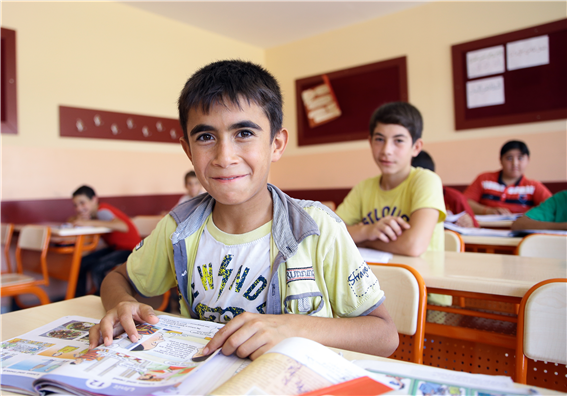
△ August 13, 2015, Students studying at a school in a refugee camp in Gaziantep, Turkey
ㅡ
We were all refugees or are potential refugees
ㅡ
Many countries around the world oppose accepting refugees because accepting refugees can place a huge economic and social burden on the country. To protect refugees, the government must spend an enormous budget, which is covered by the people's taxes. Furthermore, there are concerns that if many refugees are taken in, the competition for jobs may intensify.
However, refugees may become a source of human capital as well. According to the French National Science Research Center, refugees benefited the economy of European countries. The study says that 3 to 5 years after refugees received refugee status, they increased the accepting country’s GDP, and increased tax revenue by 1%.
The world is becoming smaller, and the issue of refugees is becoming an issue for all of us. The refugee issue affects not just the source country but its neighboring countries and even the world. It is a global issue.
Therefore, to solve the refugee problem, each one of us needs to have the awareness that we are world citizens who belong to a common community of Earth. When we see the world as one community, national borders and nationalities become meaningless and each one of us becomes an equal member of the community.
If we trace back our history, one of our ancestors may be a refugee who came from afar. Also, any one of us can become a refugee fleeing from unavoidable danger and violence.
All countries on Earth have the potential to become a source country of refugees as well as a receiving country that protects refugees. With this awareness, we need to find a way to live together with refugees.
ㅡ
We need to protect and live together with refugees around the world
ㅡ

